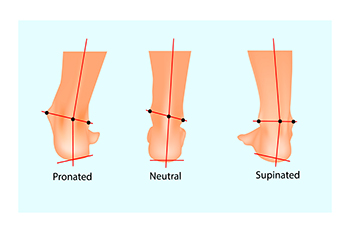
Overpronation occurs when the arches of the feet roll inward excessively while walking or running. This condition, also known as flat feet or pes planus, can lead to improper alignment and increased pressure on the lower body. People with overpronation may experience pain in the feet, ankles, knees, or hips, especially during high-impact activities. Common causes of overpronation include a naturally flexible arch, obesity, injury, or certain medical conditions that affect the foot's structure. Left untreated, overpronation can increase the risk of stress fractures, shin splints, and tendonitis. A podiatrist can evaluate your gait and recommend a variety of treatments. Included are custom orthotics, choosing more supportive footwear, or recommending specific exercises to strengthen the foot muscles and improve alignment. These solutions can help reduce discomfort and prevent further injury. If you have problems with overpronation, it is suggested that you schedule an appointment with a podiatrist for an exam and diagnosis.
If you have any concerns about your feet, contact Richard M. Allen, DPM from Idaho. our doctor can provide the care you need to keep you pain-free and on your feet.
Biomechanics in Podiatry
Podiatric biomechanics is a particular sector of specialty podiatry with licensed practitioners who are trained to diagnose and treat conditions affecting the foot, ankle and lower leg. Biomechanics deals with the forces that act against the body, causing an interference with the biological structures. It focuses on the movement of the ankle, the foot and the forces that interact with them.
A History of Biomechanics
- Biomechanics dates back to the BC era in Egypt where evidence of professional foot care has been recorded.
- In 1974, biomechanics gained a higher profile from the studies of Merton Root, who claimed that by changing or controlling the forces between the ankle and the foot, corrections or conditions could be implemented to gain strength and coordination in the area.
Modern technological improvements are based on past theories and therapeutic processes that provide a better understanding of podiatric concepts for biomechanics. Computers can provide accurate information about the forces and patterns of the feet and lower legs.
Understanding biomechanics of the feet can help improve and eliminate pain, stopping further stress to the foot.
If you have any questions please feel free to contact our office located in Lewiston, ID . We offer the newest diagnostic and treatment technologies for all your foot and ankle needs.
